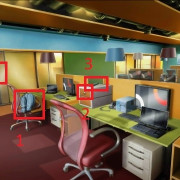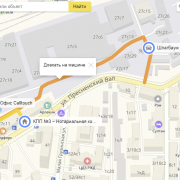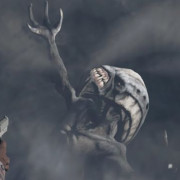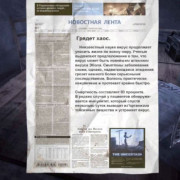Туториал по unreal engine. часть 7: звук
Содержание:
- Extracting Minecraft Music On Windows (via Windows Subsystem for Linux)[]
- Playing Sounds
- Игровой процесс[]
- Cave ambience[]
- Extracting Minecraft Sounds using Node.js[]
- Пещерные звуки[]
- Пещерные звуки
- Usage
- StopSound Command
- Old sound directory (pre-1.7)[]
- Other Game Commands
- Extracting Minecraft Music On Linux[]
- Mingus
- История
Extracting Minecraft Music On Windows (via Windows Subsystem for Linux)[]
- Create a new file (for example from the terminal): vi minecraft-music-extractor.sh
- Paste the following into the file: (when you run the file, it’ll ask you what your Windows username is and Minecraft version, the rest is automatic, and outputs to the desktop)
- Update the variables (e.g. MINECRAFT_ASSETS_DIR) with your correct directory paths
- If you want all sounds, replace «grep music» with «grep sounds», if you want the records, replace «grep music» with «grep records», these are shown commented out above the line of code.
- Run the script from terminal with «bash minecraft-music-extractor.sh».
1 #!/bin/bash
2 #
3 # Description: Minecraft Music Extractor
4
5 echo -e "Enter your Windows username:"
6 read winusername
7 echo
8
9 USER_DIR="/mnt/c/Users/$winusername"
10
11 # Windows Profile doesn't exist = Can't run
12 if ! $(ls /mnt/c/Users/ | grep $winusername) ; then
13 echo -e "Unable to run, you entered an invalid user."
14 echo -e "Make sure you entered everything correctly, spelled right with caps and lower case.\n"
15 read -p "Press key to continue..." && exit
16 fi
17
18 MINECRAFT_ASSETS_DIR="$USER_DIR/AppData/Roaming/.minecraft/assets"
19 OUTPUT_DIR="$USER_DIR/Desktop"
20
21 echo -e "Enter the Minecraft version you want to extract from:"
22 read version
23 echo
24
25 JSON_FILE=$(echo $MINECRAFT_ASSETS_DIR/indexes/$version.json | grep "/")
26
27 # Version doesn't exist = Can't run
28 if ! -f $JSON_FILE ; then
29 echo -e "Unable to extract because that version isn't downloaded or doesn't exist."
30 echo -e "Make sure to open the launcher and download the version you need to create a pack for.\n"
31 read -p "Press key to continue..." && exit
32 fi
33
34 # for ENTRY in `cat "$JSON_FILE" | python -c 'import sys,json; from pprint import pprint; data = json.load(sys.stdin); pprint(data);' | grep music | awk -F\' '{print $2 "," $6}'`
35 # cat "$JSON_FILE" | python -c 'import sys,json; from pprint import pprint; data = json.load(sys.stdin); pprint(data);'
36 # cat "$JSON_FILE" | python -c 'import sys,json; from pprint import pprint; data = json.load(sys.stdin); pprint(data);' | grep sounds
37 # cat "$JSON_FILE" | python -c 'import sys,json; from pprint import pprint; data = json.load(sys.stdin); pprint(data);' | grep records
38
39 for ENTRY in `cat "$JSON_FILE" | python -c 'import sys,json; from pprint import pprint; data = json.load(sys.stdin); pprint(data);' | grep music | awk -F\' '{print $2 "," $6}'`
40 do
41 echo "Processing $ENTRY..."
42 echo $ENTRY | cut -d, -f1
43 FILENAME=`echo $ENTRY | cut -d, -f1`
44 FILEHASH=`echo $ENTRY | cut -d, -f2`
45
46 #Locate the file in the assets directory structure
47 FULLPATH_HASHFILE=`find "$MINECRAFT_ASSETS_DIR" -name $FILEHASH`
48
49 #Copy the file
50
51 mkdir -p $OUTPUT_DIR/`echo $FILENAME | sed -E 's/\/+\..+//'`
52 cp "$FULLPATH_HASHFILE" "$OUTPUT_DIR$FILENAME"
53
54 done
Playing Sounds
Vanilla has lots of methods for playing sounds, and it is unclear which to use at times.
Note that each takes a , the ones registered above. Additionally, the terms “Server Behavior” and “Client Behavior” refer to the respective logical side.
-
Simply forwards to overload (2), adding 0.5 to each coordinate of the BlockPos given.
-
- Client Behavior: If the passed in player is the client player, plays the sound event to the client player.
- Server Behavior: Plays the sound event to everyone nearby except the passed in player. Player can be .
-
Usage: The correspondence between the behaviors implies that these two methods are to be called from some player-initiated code that will be run on both logical sides at the same time: the logical client handles playing it to the user, and the logical server handles everyone else hearing it without re-playing it to the original user.
They can also be used to play any sound in general at any position server-side by calling it on the logical server and passing in a player, thus letting everyone hear it.
-
- Client Behavior: Just plays the sound event in the client world. If is , then delays the sound based on how far it is from the player.
- Server Behavior: Does nothing.
- Usage: This method only works client-side, and thus is useful for sounds sent in custom packets, or other client-only effect-type sounds. Used for thunder.
-
- Forwards to ‘s , passing in as the player.
- Client Behavior: Does nothing.
- Server Behavior: Plays the sound event to everyone at this entity’s position.
- Usage: Emitting any sound from any non-player entity server-side.
-
(overriding the one in )
- Forwards to ‘s , passing in as the player.
- Client Behavior: Does nothing, see override in .
- Server Behavior: Plays the sound to everyone nearby except this player.
- Usage: See .
-
(overriding the one in )
- Forwards to ‘s , passing in as the player.
- Client Behavior: Just plays the Sound Event.
- Server Behavior: Method is client-only.
- Usage: Just like the ones in , these two overrides in the player classes seem to be for code that runs together on both sides. The client handles playing the sound to the user, while the server handles everyone else hearing it without re-playing to the original user.
Игровой процесс[]
Инвентарь творческого режима
Творческий режим можно выбрать в процессе создания мира. Перейти в режим Творчества можно командой . В многопользовательской игре режим игры может быть изменён индивидуально для каждого игрока командой . Это означает, что отдельные игроки могут играть в разных игровых режимах (по выбору оператора).
В творческом режиме нормальный экран инвентаря заменяется на экран выбора элементов, который представляет собой интерфейс с закладками, в котором содержатся все блоки и предметы, добавленные в игру.
Существует также функция поиска. Одна вкладка похожа на инвентарь в режиме Выживания, так как там присутствуют слоты для брони (но отсутствует сетка крафта). Другие вкладки содержат продукты питания, строительные блоки, декоративные блоки и др. Некоторые предметы ведут себя иначе, чем в режиме Выживания, например пустые вёдра никогда не заполняются водой или лавой, а заполненные вёдра никогда не опустошаются.
Брошенные предметы могут быть подобраны игроком, но если ячейки быстрого выбора уже забиты, то предмет перейдет в инвентарь Выживания. Если ячейки быстрого выбора и сам инвентарь заполнены, предметы по-прежнему могут быть подобраны (в отличие от режима Выживания), но сам предмет будет уничтожен и не появится ни в одном из слотов инвентаря.
Для того чтобы взлететь, достаточно дважды нажать прыжок (по умолчанию Пробел). Используйте клавишу прыжка, чтобы подняться и клавишу приседания, чтобы опуститься (по умолчанию ⇧ Левый Shift). Для перемещения используйте стандартные клавиши передвижения (по умолчанию WASD). Игрок может отключить режим полёта с помощью двойного нажатия прыжка снова, при этом игрок упадет на землю.
Чтобы взять блок в инвентарь, кликните средней кнопкой мыши по блоку. В отличие от режима Выживания, выбранный блок появится в одной из ячеек быстрого выбора, даже если такой блок уже присутствует в инвентаре игрока. В SMP, любые предметы не из творческого инвентаря и зачарованные предметы будут перемещены в инвентарь. Творческий режим также позволяет дублировать предметы с помощью рамок. При помещении предмета в рамку, сам предмет не исчезнет из вашей руки. Причём, если нацелившись на предмет, нажать цифру слота от 1 до 9, то этот слот заполнится стаком предмета, на который вы навели мышкой. Но, если тот слот бы заполнен другим предметом, тот предмет будет удалён из вашего быстрого слота и вернётся в вкладку.
Мобы будут по-прежнему спаунятся так же, как и в Выживании (в том числе и из спаунеров), но враждебные мобы будут нейтральными и не будут пытаться атаковать игрока.
Нерушимые блоки (коренная порода, командный блок, барьер или рамки портала в край) могут быть уничтожены в творческом режиме. Если игрок опустится слишком низко в Пустоту, то он умрёт, однако игрок может летать над Пустотой, при условии, если он не будет опускаться ниже уровня Y=-64.. Это единственный способ умереть в творческом режиме, не считая команды . В Bedrock Edition умереть в творческом режиме нельзя даже с помощью команд, в случае падения в пустоту по ней можно будет ходить как по твердым блокам.
Блоки, которые могут быть уничтожены другими способами (падение песка и гравия или яйцо дракона), могут быть подобраны игроком.
Если игрок держит меч в руке, то он не сможет разрушать блоки.
Если игрок будет лететь высоко над облаками, то будут видны два солнца, хотя на самом деле это и солнце и луна светят одновременно.
Некоторые предметы доступны только в творческом режиме, например, яйца призывания
В Xbox 360 издании создание новых миров с творческим режимом или вход в уже существующие миры с творческим режимом, приведет к тому, что будут отключены обновления достижений и списка лидеров, но нет другого влияния на геймплей. Другими словами, достижения и список лидеров работают только в мирах с режимом «Выживание». Инвентарь в Xbox 360 издании аналогичен компьютерной версии.
Cave ambience[]
Cave ambience (also known as cave sounds, or eerie noises according to the subtitles) are sounds that occasionally play when the player is underground or in a dark area, based on the .
Cave ambience sounds can play in all biomes except the Nether biomes, as long as there is a cave or a dark enough area present.
The code name for cave ambience is . There are 19 different cave ambience sounds in total.
| Name | Sound | Description |
|---|---|---|
| Cave 1 | https://minecraft.fandom.com/wiki/File:Cave1.ogg | An echoing steam train whistle |
| Cave 2 | https://minecraft.fandom.com/wiki/File:Cave2.ogg | Humming |
| Cave 3 | https://minecraft.fandom.com/wiki/File:Cave3.ogg | An eerie orchestra of very low notes |
| Cave 4 | https://minecraft.fandom.com/wiki/File:Cave4.ogg | Wind echoing through a hollow tunnel |
| Cave 5 | https://minecraft.fandom.com/wiki/File:Cave5.ogg | Ambient spine-chilling ringing sounds |
| Cave 6 | https://minecraft.fandom.com/wiki/File:Cave6.ogg | A car’s engine passing by |
| Cave 7 | https://minecraft.fandom.com/wiki/File:Cave7.ogg | A gong ringing quietly |
| Cave 8 | https://minecraft.fandom.com/wiki/File:Cave8.ogg | A blaze breathing |
| Cave 9 | https://minecraft.fandom.com/wiki/File:Cave9.ogg | An airplane flying overhead |
| Cave 10 | https://minecraft.fandom.com/wiki/File:Cave10.ogg | An echoing bang and a screeching violin |
| Cave 11 | https://minecraft.fandom.com/wiki/File:Cave11.ogg | A subway train racing at a very high speed |
| Cave 12 | https://minecraft.fandom.com/wiki/File:Cave12.ogg | A very loud bell |
| Cave 13 | https://minecraft.fandom.com/wiki/File:Cave13.ogg | Creepy heavy breath noise/growling |
| Cave 14 | https://minecraft.fandom.com/wiki/File:Cave14.ogg | Robotic glitching noises
This audio file resembles the image of a Creeper face if put into a spectrogram |
| Cave 15 | https://minecraft.fandom.com/wiki/File:Cave15.ogg | Possibly a distorted train whistle |
| Cave 16 | https://minecraft.fandom.com/wiki/File:Cave16.ogg | Metallic banging/Possibly a minecart tumbling down a tunnel |
| Cave 17 | https://minecraft.fandom.com/wiki/File:Cave17.ogg | An iron door slamming shut followed by a bell ringing with dark ambient whooshing sounds in the background. |
| Cave 18 | https://minecraft.fandom.com/wiki/File:Cave18.ogg | A minecart tumbling downhill/Something banging on wood with keys |
| Cave 19 | https://minecraft.fandom.com/wiki/File:Cave19.ogg | An echoing unorganized piano-like chord layered with a snarling noise |
Extracting Minecraft Sounds using Node.js[]
This is probably the simplest way to extract the sound files with orginal effections.
- Script 1
1 var fs = require('fs-extra')
2
3 var objects = require('./indexes/1.16.json').objects
4
5 for (var filePath in objects) {
6
7 if (!/\/(?:sounds)\//.test(filePath)) continue
8 if (!/\/(?:ambient|block|damage|dig|enchant|entity|event|fire|fireworks|item|liquid|minecart|mob|music|note|portal|random|records|step|title|ui)\//.test(filePath)) continue
9
10 var copyPath = filePath.replace('minecraft/', './')
11 var hash = objectsfilePathhash
12 var objectPath = './objects/' + hash.substring(, 2) + '/' + hash
13 console.log(objectPath, '->', copyPath)
14 fs.copySync(objectPath, copyPath)
15 }
- Script 2 to run Script 1
1 @echo off 2 npm install fs-extra -y 3 node extract-music.js 4 pause
- Create a new file inside called and paste the first script into it.
- Create a new file inside called and paste the second script into it.
- Now you can run it by double clicking the file. It will create a new folder with all the sounds in it.
By default it will extract 1.16 files. To change the version, go into the extract-music.js file and on the 3rd line, change 1.16.json to any version you want (you need to have actually played the version at least once).
- Note
Make sure the file extensions are and and not when you rename it! In other words, remove your old file extension. You may be warned that changing a file name extension could make the file unusable. However, this actually indicates that you have renamed it correctly. It will work if you keep it .txt as example, but it’s probably nicer to have it for what it is for.
If you are using Microsoft Windows and can’t see file extensions, for Windows 10, you can turn them on by going to the View menu of the file explorer and checking the check box for file name extensions. For Windows beneath Windows 10, you can uncheck «hide extensions» in folder settings.

Пещерные звуки[]
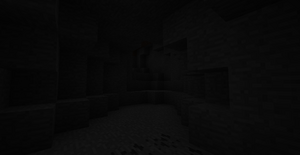
Тёмная пещера: здесь чаще всего слышатся фоновые пещерные звуки.
Пещерные фоновые звуки, или жуткий шум (согласно субтитрам), — это звуки, которые могут воспроизводиться, когда игрок находится в тёмной области или под землей. Всего существует 19 различных пещерных звуков.
Возникнуть пещерные звуки могут в любое время, в любом измерении, в любом свободном от блоков пространстве, при уровне освещения ниже 8. Звуки можно услышать, находясь в 10—20 блоках от источника звуков в любом направлении, при этом точка-источник может быть в непосредственной видимости игрока. Также условия для воспроизведения звуков можно воспроизвести, иными словами, определение допустимых точек-источников пещерных звуков основывается на текущей, а не изначальной, геометрии мира.
Проигрывание пещерных фоновых звуков зависит от уровня настроения. Настроение (от англ. mood) — это значение в процентах от 0 до 100. Когда игрок находится под землёй или в тёмном месте, уровень настроения увеличивается, а когда нет — наоборот, снижается. Если уровень настроения достигнет 100 %, проигрывается один из пещерных звуков, после чего значение настроения аннулируется и цикл повторяется заново. Настроение и его текущее значение можно увидеть на экране отладки.
Пещерные фоновые звуки можно найти по пути . В самой игре тон звука может меняться в некоторых пределах.
| Пещера 1 | |
| Пещера 2 | |
| Пещера 3 | |
| Пещера 4 | |
| Пещера 5 | |
| Пещера 6 | |
| Пещера 7 | |
| Пещера 8 | |
| Пещера 9 | |
| Пещера 10 | |
| Пещера 11 | |
| Пещера 12 | |
| Пещера 13 | |
| Пещера 14 | |
| Пещера 15 | |
| Пещера 16 | |
| Пещера 17 | |
| Пещера 18 | |
| Пещера 19 |
Пещерные звуки
Пещерные фоновые звуки, или жуткий шум (согласно субтитрам), — это звуки, которые могут воспроизводиться, когда игрок находится в тёмной области или под землей. Всего существует 19 различных пещерных звуков.
Возникнуть пещерные звуки могут в любое время, в любом измерении, в любом свободном от блоков пространстве, при уровне освещения ниже 8. Звуки можно услышать, находясь в 10—20 блоках от источника звуков в любом направлении, при этом точка-источник может быть в непосредственной видимости игрока. Также условия для воспроизведения звуков можно воспроизвести, иными словами, определение допустимых точек-источников пещерных звуков основывается на текущей, а не изначальной, геометрии мира.
Проигрывание пещерных фоновых звуков зависит от уровня настроения. Настроение (от англ. mood) — это значение в процентах от 0 до 100. Когда игрок находится под землёй или в тёмном месте, уровень настроения увеличивается, а когда нет — наоборот, снижается. Если уровень настроения достигнет 100 %, проигрывается один из пещерных звуков, после чего значение настроения аннулируется и цикл повторяется заново. Настроение и его текущее значение можно увидеть на экране отладки.
Пещерные фоновые звуки можно найти по пути . В самой игре тон звука может меняться в некоторых пределах.
| Пещера 1 | |
| Пещера 2 | |
| Пещера 3 | |
| Пещера 4 | |
| Пещера 5 | |
| Пещера 6 | |
| Пещера 7 | |
| Пещера 8 | |
| Пещера 9 | |
| Пещера 10 | |
| Пещера 11 | |
| Пещера 12 | |
| Пещера 13 | |
| Пещера 14 | |
| Пещера 15 | |
| Пещера 16 | |
| Пещера 17 | |
| Пещера 18 | |
| Пещера 19 |
Usage
Plays the specified sound.
Parameters
- whattoplay: the desired sound to play. Default is "weapons/pistol".
- slot: the used for the sound.
- volume: the volume of the sound. Default is 1.0.
- looping: if true, the sounds loops. Looping sounds can be stopped by using A_StopSound or playing another sound on the same channel. Default is false.
- attenuation: this is a positive value that specifies how quickly the sound fades with distance from its source. The higher the value the quicker it fades out. The numbers are fairly low. You will notice dramatic drop off of volume with an attenuation value of just 3 or 4 and by the time you use a value of 20 you need to be within around 64 units of the sound source to hear it clearly. The following predefined constants exist:
-
- ATTN_NONE — Plays the sound globally at the specified volume, disregarding distance.
- ATTN_NORM — Uses the close_dist and clipping_dist fields defined in the sound definition. This is the default.
- ATTN_IDLE — Uses DOOM’s normal default sound attenuation behavior.
- ATTN_STATIC — Fades quickly (inaudible from 512 units).
- For example, if you want to have a sound play at the specified volume regardless of distance (anywhere on the map), use ATTN_NONE.
- local: If true, the sound is played if the player is either looking out the calling actor’s eyes, or the calling actor is the player and the player is looking out the eyes of a non-monster actor. Also, the sound is played with ATTN_NONE. Default is false.
- pitch: the sound pitch to play the sound with. Default is 0, which means the engine will use whatever pitch shift (range) is defined in SNDINFO, if any. Standard pitch is 1.0 — lower values will slow down the sound, and higher will speed it up.
StopSound Command
- Java
- PE
- Xbox
- PS
- Nintendo
- Win10
- Edu
StopSound Command in Minecraft Java Edition (PC/Mac)
In Minecraft Java Edition (PC/Mac), the syntax to stop a sound effect from playing is:
/stopsound <targets>
Definitions
- targets is the name of the player (or a target selector) that you wish to stop the sound effect for.
- source is optional. It is the source that is currently playing the sound effect. It can be one of the following: *, ambient, block, hostile, master, music, neutral, player, record, voice, weather.
- sound is optional. It is the sound effect to stop. (See List of Sound Effect Names.)
StopSound Command in Minecraft Pocket Edition (PE)
In Minecraft Pocket Edition (PE), the syntax to stop a sound effect from playing is:
/stopsound <player>
Definitions
- player is the name of the player (or a target selector) that you wish to stop the sound effect for.
- sound is optional. It is the sound effect to stop. (See List of Sound Effect Names.)
StopSound Command in Minecraft Xbox One Edition
In Minecraft Xbox One Edition, the syntax to stop a sound effect from playing is:
/stopsound <player>
Definitions
- player is the name of the player (or a target selector) that you wish to stop the sound effect for.
- sound is optional. It is the sound effect to stop. (See List of Sound Effect Names.)
StopSound Command in Minecraft PS4 Edition
In Minecraft PS4 Edition, the syntax to stop a sound effect from playing is:
/stopsound <player>
Definitions
- player is the name of the player (or a target selector) that you wish to stop the sound effect for.
- sound is optional. It is the sound effect to stop. (See List of Sound Effect Names.)
StopSound Command in Minecraft Nintendo Switch Edition
In Minecraft Nintendo Switch Edition, the syntax to stop a sound effect from playing is:
/stopsound <player>
Definitions
- player is the name of the player (or a target selector) that you wish to stop the sound effect for.
- sound is optional. It is the sound effect to stop. (See List of Sound Effect Names.)
StopSound Command in Minecraft Windows 10 Edition
In Minecraft Windows 10 Edition, the syntax to stop a sound effect from playing is:
/stopsound <player>
Definitions
- player is the name of the player (or a target selector) that you wish to stop the sound effect for.
- sound is optional. It is the sound effect to stop. (See List of Sound Effect Names.)
In Minecraft Education Edition, the syntax to stop a sound effect from playing is:
/stopsound <player>
Definitions
- player is the name of the player (or a target selector) that you wish to stop the sound effect for.
- sound is optional. It is the sound effect to stop. (See List of Sound Effect Names.)
Old sound directory (pre-1.7)[]
If you play the game before 1.7.2, the sound directory is located as follows:
- Windows: or
- macOS:
- Linux:
If you have played both the old and new versions, then both the old and new directories will exist in the game files. The old directory is only used for pre-1.7 versions.
Legacy sub-folders
In , there are 13 sub folders:
- : Ambiance and rain/thunder
- : Sounds of the player taking damage
- : Breaking blocks
- : Fire sounds
- : Fireworks sound effects
- : Sounds made by liquids such as water and lava
- : Sounds created by moving minecarts
- : Mob sounds
- : Background music by C418
- : Various sound effects from eating to explosions
- : Music on the record discs found
- : Footsteps
- : Pistons
Other Game Commands
You can use other commands and cheats in Minecraft such as:
How to Use the Ability Command
How to Use the Achievement Command
How to Use the Advancement Command
How to Use the AlwaysDay Command
How to Use the Attribute Command
How to Use the BlockData Command
How to Use the Bossbar Command
How to Use the CameraShake Command
How to Use the Clear Command
How to Use the ClassroomMode Command
How to Use the Clone Command
How to Use the Code Command
How to Use the Connect Command
How to Use the Data Command
How to Use the DataPack Command
How to Use the DayLock Command
How to Use the Debug Command
How to Use the DefaultGameMode Command
How to Use the Difficulty Command
How to Use the Effect Command
How to Use the Enchant Command
How to Use the EntityData Command
How to Use the Execute Command
How to Use the Experience Command
How to Use the Fill Command
How to Use the Forceload Command
How to Use the Function Command
How to Use the GameMode Command
How to Use the Gamerule Command
How to Use the Give Command
How to Use the Help Command
How to Use the ImmutableWorld Command
How to Use the JFR Command
How to Use the Kick Command
How to Use the Kill Command
How to Use the Locate Command
How to Use the LocateBiome Command
How to Use the Me Command
How to Use the MobEvent Command
How to Use the Msg Command
How to Use the Particle Command
How to Use the Publish Command
How to Use the Recipe Command
How to Use the Reload Command
How to Use the ReplaceItem Command
How to Use the Say Command
How to Use the Scoreboard Command
How to Use the Seed Command
How to Use the SetBlock Command
How to Use the SetMaxPlayers Command
How to Use the SetWorldSpawn Command
How to Use the Spawnpoint Command
How to Use the SpreadPlayers Command
How to Use the Stats Command
How to Use the StopSound Command
How to Use the Summon Command
How to Use the Tag Command
How to Use the TakePicture Command
How to Use the Team Command
How to Use the Teammsg Command
How to Use the Teleport Command
How to Use the Tell Command
How to Use the TellRaw Command
How to Use the TestFor Command
How to Use the TestForBlock Command
How to Use the TestForBlocks Command
How to Use the TickingArea Command
How to Use the Time Command
How to Use the Title Command
How to Use the TitleRaw Command
How to Use the Tm Command
How to Use the ToggleDownfall Command
How to Use the Tp Command
How to Use the Trigger Command
How to Use the W Command
How to Use the Wb Command
How to Use the Weather Command
How to Use the WorldBorder Command
How to Use the WorldBuilder Command
How to Use the WSServer Command
How to Use the Xp Command
How to Find your XYZ Coordinates
How to Keep Inventory when you Die
Extracting Minecraft Music On Linux[]
- Create a new file (for example from the terminal): vi minecraft-music-extractor.sh
- Paste the following into the file: (when you run the file, it’ll ask you what Minecraft version, the rest is automatic, and outputs to the desktop)
1 #!/bin/bash
2 #
3 # Description: Minecraft Music Extractor
4
5 USER_DIR=$(echo ~ | grep "/")
6 MINECRAFT_ASSETS_DIR="$USER_DIR/.minecraft/assets"
7 OUTPUT_DIR="$USER_DIR/Desktop"
8
9 echo -e "Enter the Minecraft version you want to extract from:"
10 read version
11 echo
12
13 JSON_FILE="$MINECRAFT_ASSETS_DIR/indexes/$version.json"
14
15 # Version doesn't exist = Can't run
16 if ! -f $JSON_FILE ; then
17 echo -e "Unable to extract because that version isn't downloaded or doesn't exist without orgins."
18 echo -e "Make sure to open the launcher and download the version you need to create a pack for.\n"
19 read -p "Press key to continue..." && exit
20 fi
21
22 #for ENTRY in `cat "$JSON_FILE" | python -c 'import sys,json; from pprint import pprint; data = json.load(sys.stdin); pprint(data);' | grep music | awk -F\' '{print $2 "," $6}'`
23 #cat "$JSON_FILE" | python -c 'import sys,json; from pprint import pprint; data = json.load(sys.stdin); pprint(data);'
24 #cat "$JSON_FILE" | python -c 'import sys,json; from pprint import pprint; data = json.load(sys.stdin); pprint(data);' | grep music
25
26
27 for ENTRY in `cat "$JSON_FILE" | python -c 'import sys,json; from pprint import pprint; data = json.load(sys.stdin); pprint(data);' | grep sounds | awk -F\' '{print $2 "," $6}'`
28 do
29 echo "Processing $ENTRY..."
30 echo $ENTRY | cut -d, -f1
31 FILENAME=`echo $ENTRY | cut -d, -f1`
32 FILEHASH=`echo $ENTRY | cut -d, -f2`
33
34 #Locate the file in the assets directory structure
35 FULLPATH_HASHFILE=`find "$MINECRAFT_ASSETS_DIR" -name $FILEHASH`
36
37 #Copy the file
38
39 mkdir -p $OUTPUT_DIR/`echo $FILENAME | sed -E 's/\/+\..+//'`
40 cp "$FULLPATH_HASHFILE" "$OUTPUT_DIR$FILENAME"
41
42 done
- If you want all sounds, replace «grep music» with «grep sounds».
- You may need to run `chmod u+x minecraft-music-extractor.sh` if the script isn’t executing.
- Run the script from terminal with «./minecraft-music-extractor.sh».
Mingus
Mingus – это пакет на Python. Его используют многие программисты, исследователи музыкантов и композиторы для создания и изучения музыки и песен. Этот пакет является кроссплатформенным и представляет собой очень продвинутую теорию музыки, представляющую пакет для Python вместе с файлами цифрового интерфейса музыкальных инструментов и поддержкой воспроизведения.
Пакет Mingus можно использовать для образовательных инструментов, для создания редакторов для песен, а также во многих других приложениях и программах, в которые пользователи хотят импортировать функцию обработки и воспроизведения музыки.
Этот пакет представляет собой теорию музыки и включает в себя такие темы, как гаммы, прогрессии, аккорды и интервалы. Mingus тестирует эти компоненты и использует для создания и распознавания музыкальных элементов с помощью удобных сокращений.
Например:
import mingus.core.notes as notes_m
# for valid notes
notes_m.is_valid_note("C")
notes_m.is_valid_note("D#")
notes_m.is_valid_note("Eb")
notes_m.is_valid_note("Fbb")
notes_m.is_valid_note("G##")
Выход:
True True True True True
# для недействительных заметок:
notes_m.is_valid_note("c")
notes_m.is_valid_note("D #")
notes_m.is_valid_note("E-b")
Выход:
False False False
История
| Альфа-версия Java Edition | |||||
|---|---|---|---|---|---|
| 1.0.3 | Добавлены фоновые звуки. Они созданы C418. | ||||
| Официальный выпуск Java Edition | |||||
| 1.2.1 | 12w07a | Новый формат карт, Anvil, допускает проигрывание фоновых звуков в многопользовательской игре. Теперь пещерные фоновые звуки могут доноситься из пространства меньше куба 3×3×3. | |||
| 1.8 | Фоновая музыка не играет при входе в Край или Нижний мир. | ||||
| 1.9 | 15w43a | Добавлен 1 пещерный фоновый звук (теперь их 14). | |||
| 1.10 | pre2 | Добавлено 2 пещерных фоновых звука (теперь их 16). | |||
| 1.12 | 17w13a | Добавлено 2 пещерных фоновых звука (теперь их 18). | |||
| 1.13 | 18w02a | Добавлен 1 пещерный фоновый звук (теперь их 19). | |||
| 18w10a | Добавлено 22 подводных фоновых звука. | ||||
| 1.16 | 20w10a | Добавлены фоновые звуки Нижнего мира, проигрывающиеся в биомах пустошей Нижнего мира, багрового леса, искажённого леса и долины песка душ. | |||
| 20w12a | Новый алгоритм настроения (Mood) проигрывания фоновых звуков в пещере. | ||||
| 20w15a | Добавлены фоновые звуки для биома базальтовых дельт. | ||||
| Официальный выпуск Bedrock Edition | |||||
| 1.16.0 | beta 1.16.0.57 | Пещерные фоновые звуки и звуки Нижнего мира добавлены в игру. | |||
| beta 1.16.0.59 | Новый алгоритм настроения (Mood) проигрывания фоновых звуков в пещере. | ||||
| Legacy Console Edition | |||||
| 13 пещерных фоновых звуков добавлено в игру. | |||||
| Добавлена опция включения или отключения пещерных фоновых звуков. | |||||
| Добавлены звуки «Пещера 15» и «Пещера 16». | |||||
| Добавлен звук «Пещера 14». | |||||
| Добавлены звуки «Пещера 17» и «Пещера 18». | |||||
| Добавлен звук «Пещера 19». |
